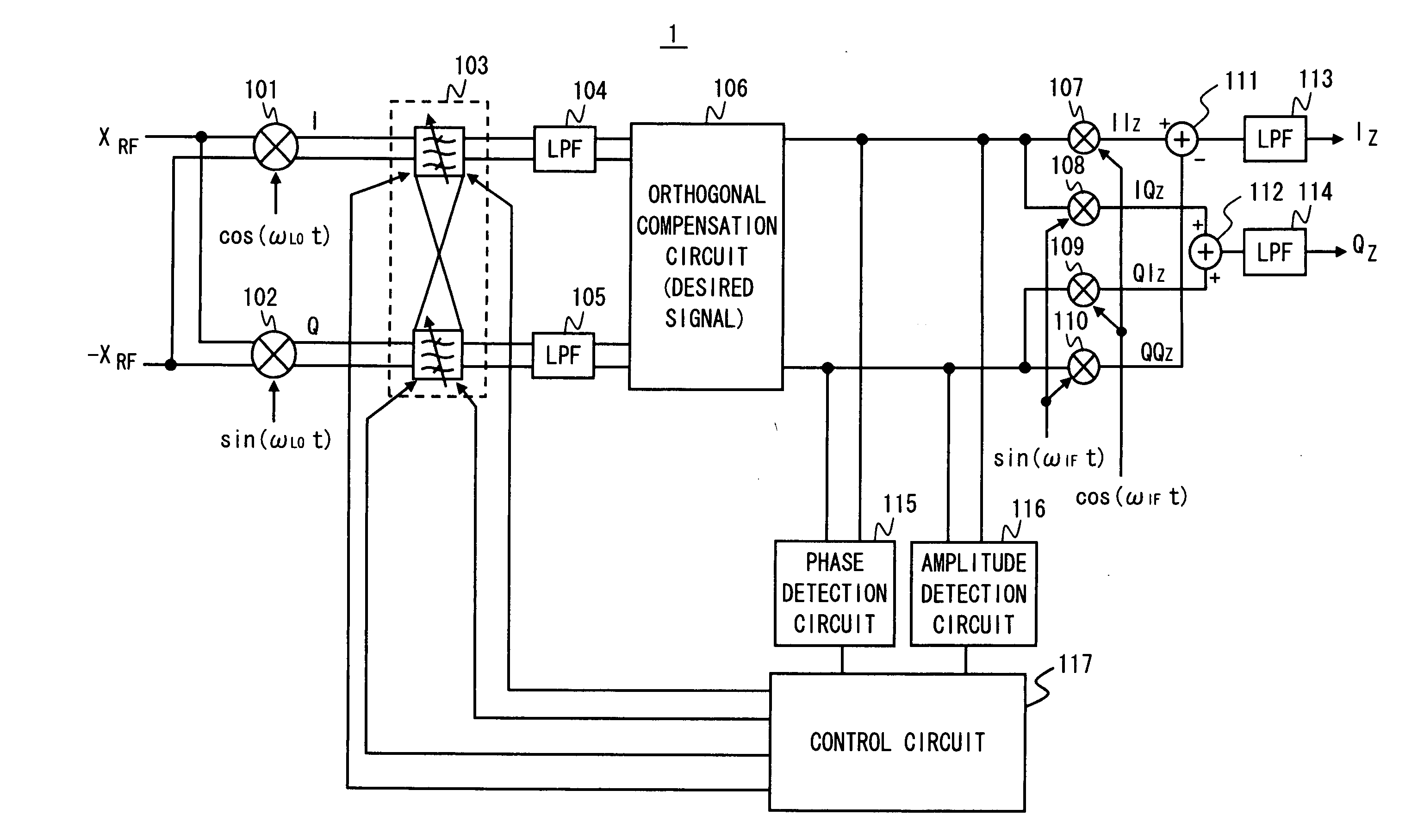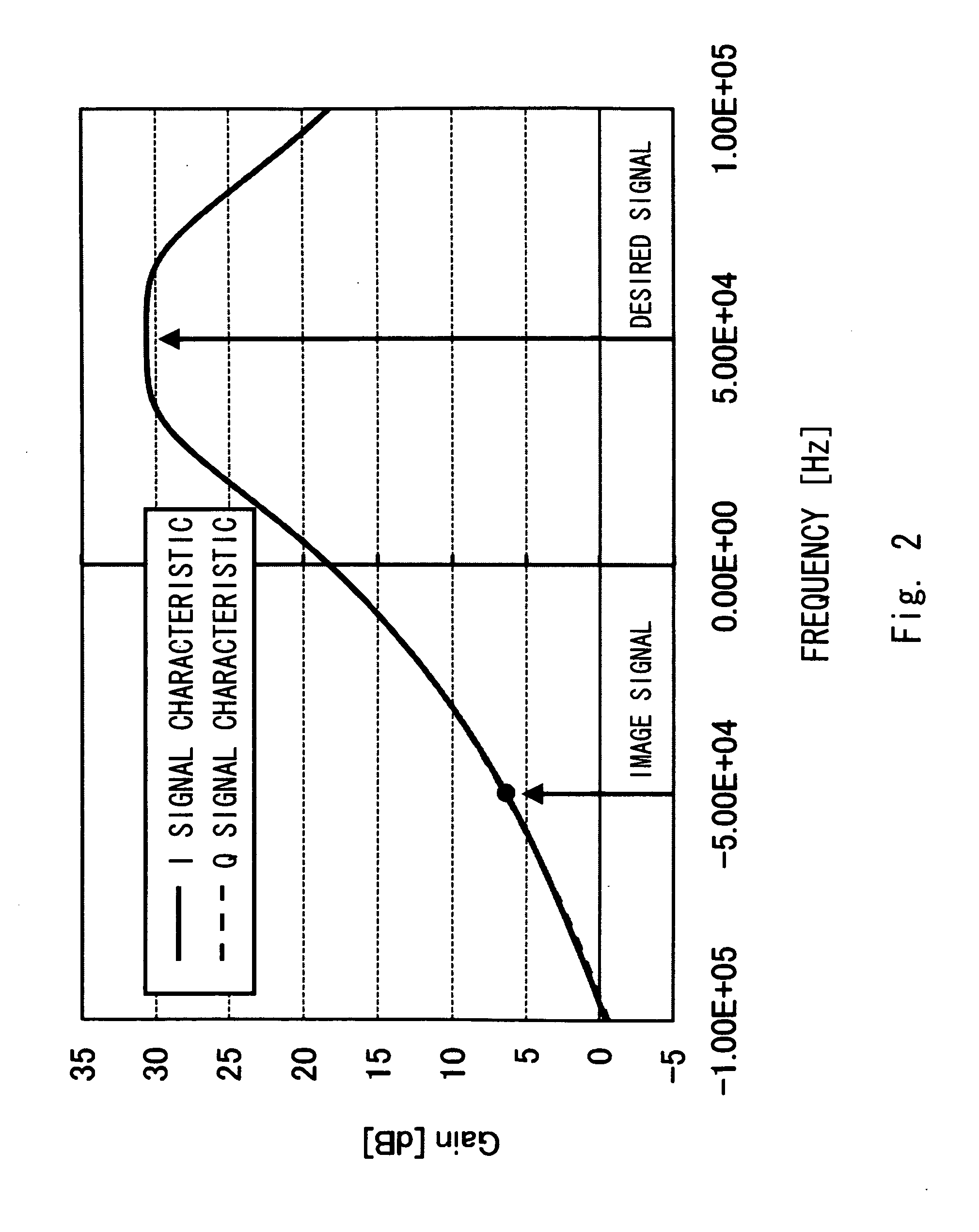Receiving apparatus and image rejection method
a receiver and image technology, applied in the direction of electrical equipment, transmission, etc., can solve the problems of large increase in difficulty in ensuring the orthogonality of both desired signal and image signal, and achieve the effect of greatly increasing iq mismatch of image signal
- Summary
- Abstract
- Description
- Claims
- Application Information
AI Technical Summary
Benefits of technology
Problems solved by technology
Method used
Image
Examples
first exemplary embodiment
[0027]FIG. 1 is a block diagram showing a configuration example of an image rejection receiver 1 according to a first exemplary embodiment of the present invention. The receiver 1 shown in FIG. 1 performs image suppression by a complex filter and image rejection by the Weaver architecture by combining them. More specifically, a complex filter 103 is arranged between a first orthogonal mixer (mixers 101 and 102) and a second orthogonal mixer (mixers 107 and 110, and mixers 108 and 109).
[0028]The mixer 101 shown in FIG. 1 multiplies differential RF signals (XRF and −XRF) by a local signal (cos(ωLOt)), so as to generate an in-phase signal (I signal) of IF bandwidth. The mixer 102 multiplies differential RF signals (XRF and −XRF) by a local signal (sin(ωLOt)), so as to generate an orthogonal signal (Q signal) of IF bandwidth.
[0029]The complex filter 103 has an asymmetrical frequency gain property between a positive frequency domain and a negative frequency domain. The complex filter 103...
exemplary embodiment 1
Other Exemplary Embodiment 1
[0054]Although the Weaver architecture and the complex filter have been combined in the first exemplary embodiment, the Hartley architecture may be used instead of using the Weaver architecture. In this case, the orthogonal mixing operation performed in the second-stage mixers 107 to 110 may be replaced with the 90-degree phase shift operation using the phase circuit.
exemplary embodiment 2
Other Exemplary Embodiment 2
[0055]The arrangement of the orthogonal compensation circuit 106 is not limited between the complex filter 103 and the second-stage mixers 107 to 110. For example, the orthogonal compensation circuit 106 may be arranged in the subsequent stage of the LPFs 113 and 114. When an analog modulation signal is received and the signal is down-converted by the second-stage mixers 107 to 110 to around DC, the orthogonal compensation circuit 106 is preferably arranged in the IF frequency section as shown in FIG. 1, whereby the phase rotation of the I signal and the Q signal can be observed and the phase difference deviation in the desired signals can be easily detected.
PUM
 Login to View More
Login to View More Abstract
Description
Claims
Application Information
 Login to View More
Login to View More - R&D
- Intellectual Property
- Life Sciences
- Materials
- Tech Scout
- Unparalleled Data Quality
- Higher Quality Content
- 60% Fewer Hallucinations
Browse by: Latest US Patents, China's latest patents, Technical Efficacy Thesaurus, Application Domain, Technology Topic, Popular Technical Reports.
© 2025 PatSnap. All rights reserved.Legal|Privacy policy|Modern Slavery Act Transparency Statement|Sitemap|About US| Contact US: help@patsnap.com



